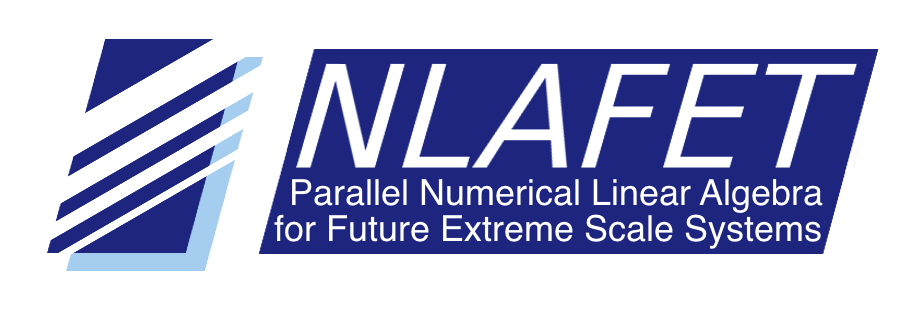The algorithms and software developed in the NLAFET project are evaluated in four complementary real world application domains: particle physics, power systems, linear elasticy problems, and data analysis in astrophysics.
On the one hand, these applications provide real-world needs and requirements that will drive the research and development activities, and serve as a means to validate the benefit of the algorithms and software delivered by the NLAFET project to application communities as well as other stakeholders in the HPC ecosystem. On the other, they serve as showcases and thus play an important role for the dissemination and exploitation of the project results.
This work constitutes WP5 – Challenging applications – a selection, and is structured in three tasks:
The workflow with the different applications will follow the same structure to ensure a smooth collaboration between the applications and the research-oriented work packages in NLAFET. First, application owners will carry out a requirements analysis, detailing the specific requirements of each application. Then the relevant software components delivered by the NLAFET project will be adapted and validated within the application context. This will comprise an adaption/implementation phase, an internal testing phase and finally a validation and acceptance phase with application owners. These phases may be repeated in a cyclical fashion to ensure newly identified needs are met.
The committed applications with project owners are briefly described below:
- Task-based Shared Memory Parallelism into 2DRMP software for modelling of electron scattering from H-like atoms and ions
- Stan Scott, Queen’s University, Belfast
- Using Plasma to improve fundametal steps in 2DRMP software
- Load flow based calculations in large-scale power systems
- Bernd Köss, DIgSILENT GmbH, Germany
- Extreme scale, highly sparse, unsymmetrical and very ill-conditioned Ax = b
- Communication avoiding iterative methods and their efficiency for solving linear systems arising from several different applications, in particular linear elasticity problems
- Communication-avoiding methods for sparse linear systems
- Data analysis in astrophysics and the Midapack library
- Radek Stompor, APC/CNRS, France; Carlo Baccigalupi, SISSA Italy
- Communication-avoiding methods adapted to generalized least-squares problem
For a more elaborate description of the application requirements and the process to address and validate them are presented in the the Deliverables D5.2 and D5.3. Notice that two of the applications (1 and 3) have been changed during the project.

